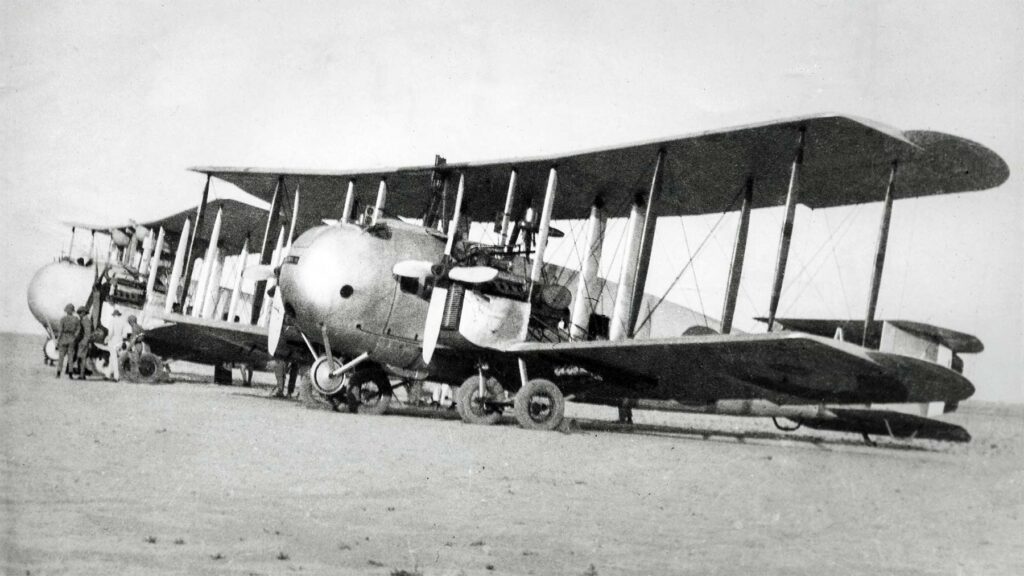Vickers Vernon: UK’s first troop transport—twin-engine, biplane, saw service in RAF for air drops and colonial policing in the 1920s. The Vickers Vernon was a notable biplane of the British Royal Air Force (RAF), holding the distinction as the first dedicated troop transport aircraft. Developed from the Vickers Vimy, it served predominantly in the 1920s, providing critical air logistics and facilitating colonial control. Although it was eventually superseded by more advanced models, its contribution to the development of military air transport was significant.
In the early 20th century, as the world was recovering from the ravages of World War I, nations were exploring the potential of aviation. The Vickers Vernon played an instrumental role in this era, marking a transition from combat to support roles for aircraft.
History of the Development of the Vickers Vernon:
The need for aircraft to fulfill roles beyond combat became apparent after WWI. The RAF sought a versatile aircraft capable of transporting troops and materials, leading to the development of the Vickers Vernon. Launched by Vickers Limited, a pioneering company in aviation, the Vernon was based on the successful Vimy bomber design. The program commenced in the early 1920s, responding to the RAF’s requirement for an air transport vehicle. Vickers, having established itself through the production of military equipment including aircraft, took on this challenge, and the Vernon first flew in 1921.
The Vickers Vernon was named after the Vernon “family” of Vickers aircraft, all sharing a common lineage with the Vimy. The period after the First World War saw a downsizing of military forces, but the British Empire, spread across the globe, required efficient means to maintain its reach and control. The introduction of air transport was seen as a revolutionary step in this direction. The Vickers Vernon was part of the RAF’s early efforts to establish air mobility as a core component of its capability.
Design of the Vickers Vernon:
Constructed predominantly of wood and fabric, the Vernon was a reflection of its time, embodying the design principles of early aviation with a biplane structure. It utilized two Rolls-Royce Eagle VIII engines, each producing around 360 horsepower. The aircraft featured an open cockpit for the pilots and could carry up to 11 passengers or equivalent cargo in its internal bay. The wingspan of the Vernon was approximately 67 feet (20.42 meters), and it had a length of about 43 feet (13.11 meters). The advantage of such a design was the ability to operate from rudimentary airfields, which was essential for the RAF’s operations in less developed parts of the Empire.

Performance of the Vickers Vernon:
The Vernon’s engines provided a maximum speed of around 100 mph (160 km/h) and a service ceiling of up to 6,500 feet (1,981 meters). While not impressive by today’s standards, these specifications were suitable for the aircraft’s role at the time. The Vernon had a range of about 580 miles (933 kilometers), which allowed for substantial operational flexibility. When compared to contemporaries such as the Airco DH.10, the Vernon was not significantly superior in performance but offered reliability and ease of maintenance, crucial for operations in remote locales.
Military Use and Combat of the Vickers Vernon:
The Vernon was not armed and did not see combat in the traditional sense. Its service was during the interwar period, predominantly used for troop transportation and supply drops. Notably, it played a role in “air policing” in the Middle East, a precursor to modern air mobility operations. The Vernon’s role was supplanted by the Vickers Victoria, a similar but more capable aircraft, and it was eventually retired from service. The Vernon was not sold to other countries, and its use was limited to the RAF.
The Vickers Vernon holds a place in aviation history as the RAF’s first troop transport aircraft. It symbolized the transition from warfighting to support roles for aircraft and highlighted the importance of air mobility in maintaining and supporting the interests of the British Empire during the interwar period. The Vernon’s legacy is not one of battlefield glory but of pioneering the use of air transport in military logistics, influencing the design and development of transport aircraft for years to come.
Back to Transport planes.